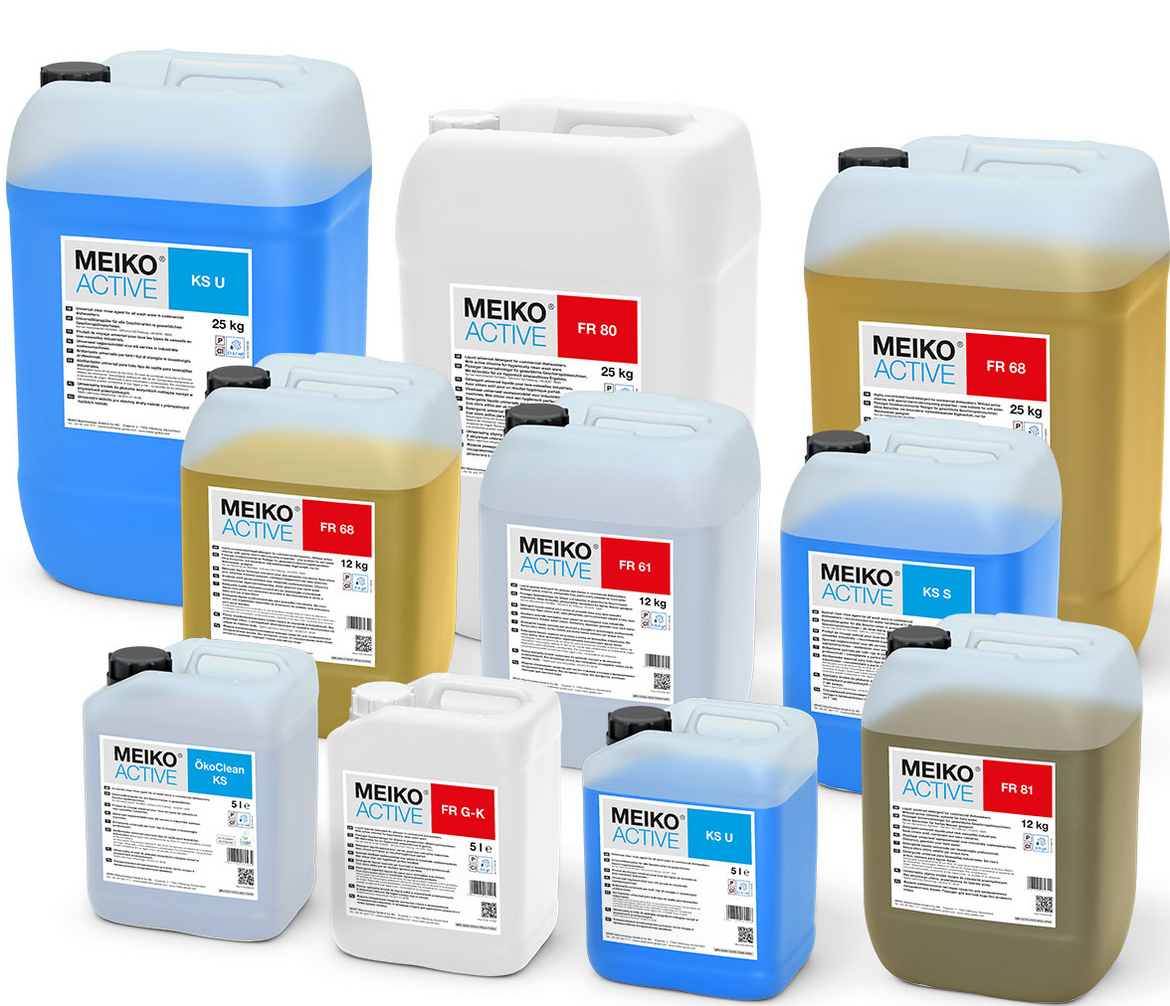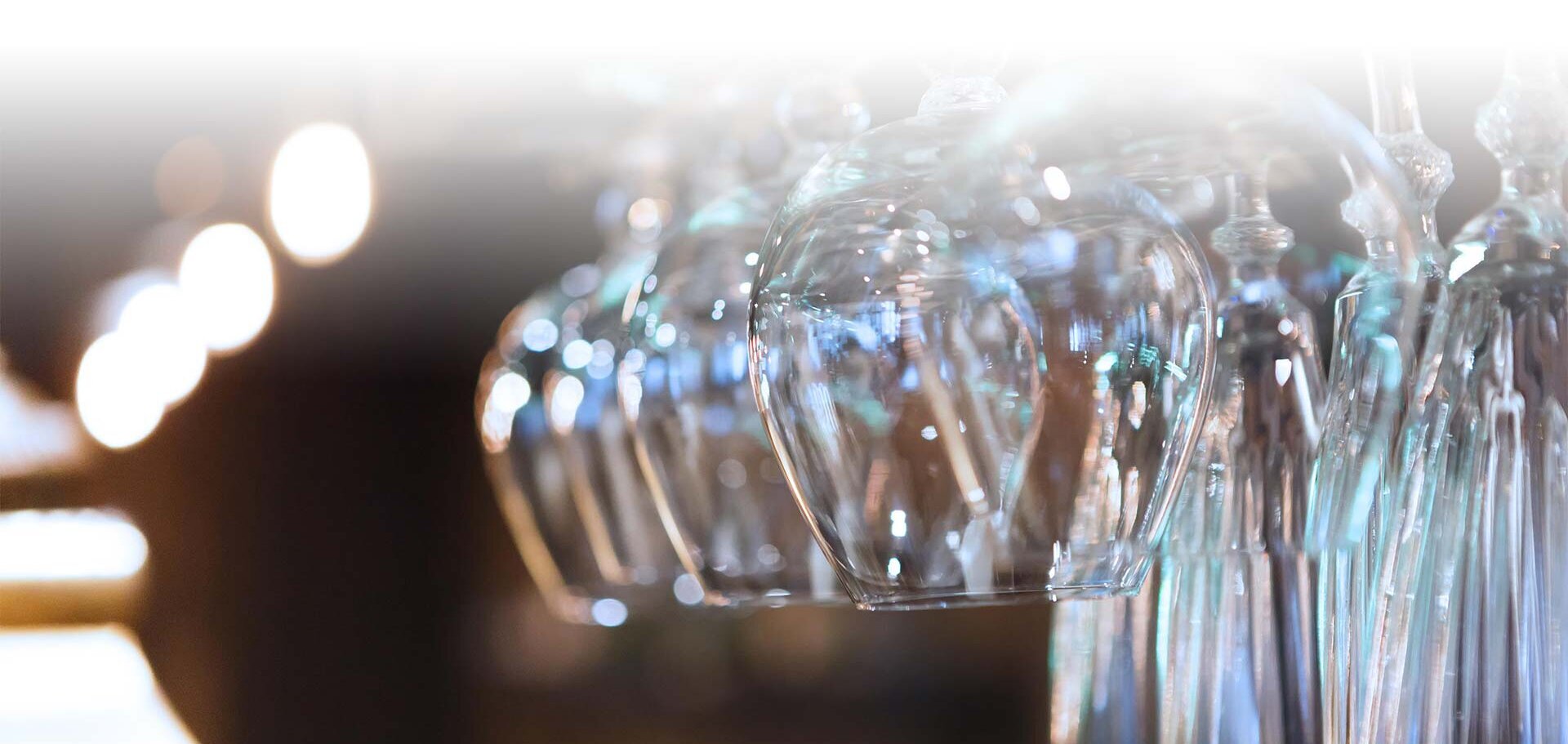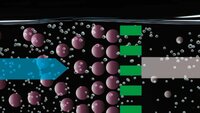Do you think that using a lot will help? And that this is especially true when it comes to detergents and hygienic cleaning?Unfortunately, things are not that simple. When plates, glasses or cutlery do not come out of the dishwasher one hundred percent clean, the first thought is often: Not enough detergent was used. But the experts know that an inferior rinsing result can have many causes. Simply increasing the dosage of the chemicals will not help most restaurateurs, but will worsen the situation in some cases.
POOR WASHING RESULTS?
Many factors play a role
- Washware
- Drying time
- Type and quantity of food waste
- Pre-washing
- Temperature
- Contact time
- Mechanics
- Water quality and quantity
- Washing liquid
- Final rinse
- Drying
"One of the most important criteria for flawless dishes is the correct dosage of detergent and rinse aid."
In order for a professional dishwashing machine or glasswasher to deliver what it promises in the catering business, its individual components must be precisely matched to one another. This is one of the reasons why the Offenburg-based warewashing technology manufacturer MEIKO works closely with the rinsing chemistry specialist etol in Oppenau (Baden). "The etol company has been manufacturing detergents and rinse aids for commercial dishwashing machines for more than 60 years," explains etol sales manager Frank Zander (right). "From the very beginning, we have worked in partnership with MEIKO, and have been able to build on one another's experience. This know-how is incorporated into the development of our detergents and rinse aids." We therefore have a treasure trove of knowledge that benefits the environment, costs, and washing results in equal measure - and thus also the owners of restaurants, bars, bistros and cafés.

DO NOT TAKE WASHING-UP LIQUID LIGHTLY
"One of the most important criteria for perfect dishes is the correct dosage of washing-up liquid and rinse aid. Sustainability is of particular interest to us as manufacturers, which is why we always advise our customers according to the motto 'as little as possible - as much as necessary'," says Frank Zander. Because even if many believe that it is "only" detergent, it is a chemical substance that can cause damage if handled incorrectly. It is not for nothing that packaging and containers are labelled with hazard symbols. "In order to counteract these sources of error, operators of a dishwashing machine should consult a specialist. He or she will analyse the individual components and the rinsing process in all their complexity, and will then select the right products and set the correct dosage." This approach also throws light on the possibilities that exist to reduce the use of chemicals.

INCREASED DETERGENT CONSUMPTION?
This may be due to:
- Heavily soiled washware
- Deficient pre-washing
- Long drying times
- Preheating the washware above 60 degrees
- Short contact times
- Low temperature of the detergent solution
- Cleaning problems caused by washware (e.g. shape or material)
- High water hardness
Martin Schömezler, Head of International Chemical Sales at MEIKO
WHICH DETERGENT IS THE RIGHT ONE?
There is a good reason why detergents have so many different compositions. Glasses, for example, need an agent that is particularly gentle on the surface and decor. And for plates with dried food waste on them, you may need a concentrate with a high starch-degrading property. Which rinse aid is used depends, in turn, on the water hardness and whether the machine is equipped with reverse osmosis, partial or full demineralisation. These and many other criteria, such as temperature, wash cycle time, water pressure, etc., influence what chemistry is required. "Our product portfolio therefore covers over 100 different products in order to be able to offer the detergent required in every situation," explains Frank Zander.

A SMALL CHEMISTRY LESSON:
Surfactants ... reduce the surface tension of the water and enclose the dirt particles.
Enzymes ... break down protein- or starch-containing impurities such as egg yolk, sauces or blood, as surfactants and bleaching agents have no effect here.
Alkalis ... have a high pH value, which makes them mild to highly corrosive. This causes cell tissue to swell and be destroyed.
Phosphates and citrates ... keep the dirt particles dissolved and ensure that they do not settle on the dishes again.
Acids ... dissolve limescale deposits and rust.
Bleaching agents (e.g. chlorine) ... destroy dyes and have a disinfecting effect.
INCORRECT DOSAGE
of detergent and rinsing additives

Too little detergent or rinse aid causes corrosion and increases the risk of deposits, water stains and lack of gloss. In addition, the dishes in the machine do not dry properly. If, on the other hand, the dosage is too high, this has a negative impact on the environment and the increased consumption of detergents leads to unnecessary costs. What many people forget, however, is the damage that can be caused to the washware or the machine. Cleaning specialist Frank Zander explains: "Modern dishwashing machines contain a wide variety of materials. If raw materials are used that do not meet the requirements for this material composition, the dishwashing machine can quickly be impaired. So the bottom line is that if you use high-quality detergents that are tailored to your individual needs, you can save money."
RELY ON THE PROFESSIONALS FOR EVERYTHING FROM DETERGENTS TO DOSAGE
Anyone who buys a new professional dishwashing machine should ensure that a specialist not only installs and connects the appliance, but also makes all the necessary adjustments directly. This also includes the correct dosage of the detergent. Only in this way can a commercial dishwashing machine clean continuously and without loss of quality. There is a balanced interaction at play, and this should never get mixed-up.




